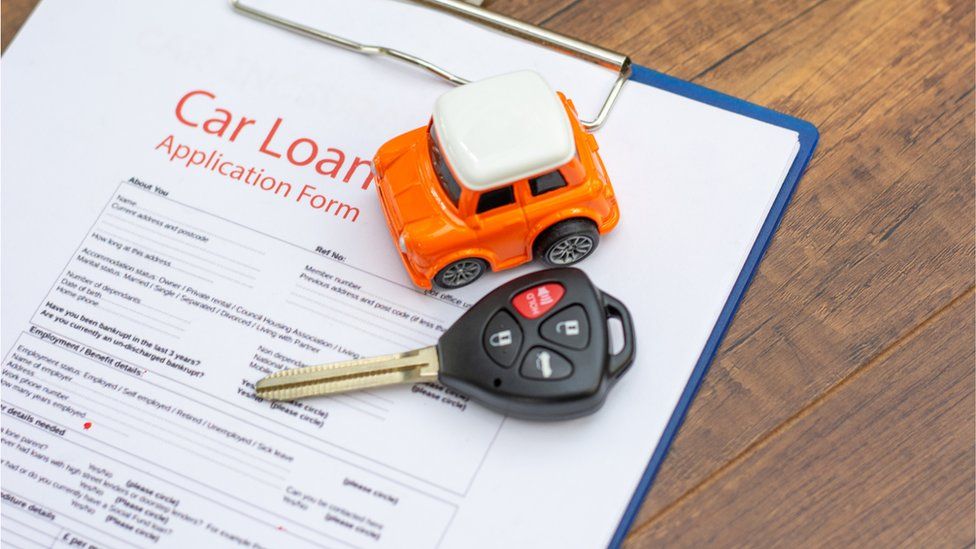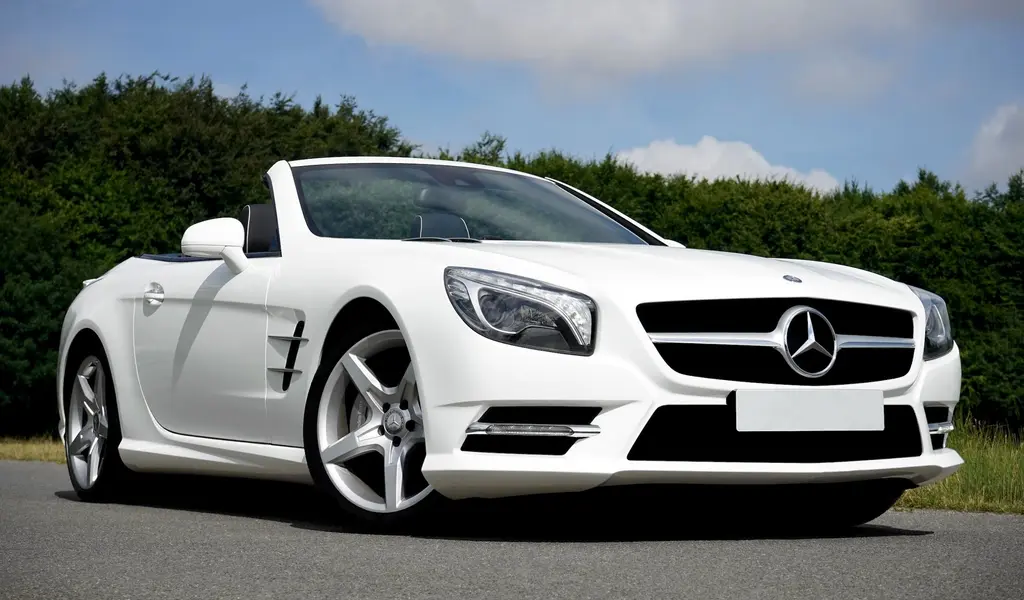News
Loan, Lease or Hire – Which Option to Choose if You Need a Car?

Nowadays, almost anyone can afford a new car. If it is not bought and paid in cash, one can take a loan, lease or hire a car. Each of these solutions is subject to other rules when you need a car.
In accordance with the survey conducted by ARC Rynek I Opinia upon the request of Volkswagen Financial Services in May 2021, 85% of the surveyed declared that they paid for their used car in cash.
This method of financing cars that are already in the market should not be surprising to anyone. Cars with a history of a few years of use can be bought for several thousand Polish zlotys.
But the situation is completely different for brand new cars purchased from car dealers. The prices of new models start from several dozen thousand Polish zlotys. For this reason, an average citizen rarely can afford to buy such a car and pay in cash.
Even if someone is extremely determined, it takes at least a few years to collect the appropriate amount. But obviously, no one would like to wait so long and people usually need a car now. What can they do then?
Fortunately, the lack of sufficient funds is no longer a problem. The purchase of a new car can be achieved through a number of different car finance options, the most common being a car loan but there are many more.
Anchor Text: car finance options
. And if you do not want to have such liabilities, you can choose a lease or long-term hire.

The best car loan – what are the options?
If you choose to take a bank loan to pay for the purchased car, you have two options: either to take a standard car loan or to take a cash loan intended for such a purchase.
Car loan What should you know?
Many banks offer car loans. You should be aware that this type of financing instrument is only intended for the purchase of a vehicle (car, motorcycle, scooter, yacht, etc.). This means that the money obtained from the bank cannot be spent for any other purpose.
What should you do to get the best car loan? The key condition to obtain such a loan is to establish security on the purchased vehicle in favor of the bank. Also does refinancing your car hurt your credit?
Such security may take one of the following forms:
- transfer of title to secure loan repayment
- registered pledge
- assignment of rights and obligations under third-party liability insurance and accident and theft insurance policy
- leaving a vehicle history card in deposit.
Does it sound too complicated? Let us explain everything. Transfer of title to secure loan repayment simply means the transfer of ownership rights from the debtor to the creditor (in this case from the car buyer to the bank which has granted a car loan). When the vehicle buyer has repaid all its liabilities to the bank, he or she will regain all rights. But until then the bank will be the legal owner of the car.
Registered pledge on the car is another form of security in which the buyer of the car retains ownership rights but if he or she stops repaying the loan, the bank may take over the car to satisfy its claims.
Every car admitted to driving on roads should have valid third-party liability insurance. In the case of a car loan, banks often require also additional accident and theft insurance. In order to secure their interests, they may also require that the borrower should assign his or her rights under the policy.

Insurance Company Payouts
This means that when procuring insurance the car owner should make a proviso that any potential compensation (or a part thereof) should be paid in favour of the bank. For example, if a car purchased under a car loan is stolen, the funds will be paid by the insurance company to the bank and not the car owner.
The latter form of security of car loans is the placement of a vehicle history card in deposit. In this case, no formal requirements must be met. It is sufficient for the buyer of the car to just give the bank the vehicle history card to keep in deposit.
What is the purpose of that? It is not possible to sell the car or make any amendments to the registration card without the vehicle history card. In practice, it means that any steps in relation to the car require consultation with the bank. After the entire loan amount has been repaid, the vehicle history card is returned to the owner.
Take a car loan?
When is it a good idea to take a car loan if you need a car? For sure, when we do not like to fulfill formal requirements and are eager to have someone else handle them for us. In the event of the purchase of a new car, it is usually an employee of a showroom or another authorised person who will take care of everything in relation to the loan.
If it is acceptable to you that throughout the loan term you lack freedom in the disposal of the car, this may be a suitable option, especially if you have already calculated your car loan costs in advance.
What if you need a loan but would rather not make your decisions with regard to the use of the car-dependent on the bank? Then a classic cash loan is a right solution.

Cash loan. Another way to pay for the purchase of a car
If you need a car a cash loan can be used to finance both the car purchase and many other liabilities which require greater financial expenses. Banks are usually not interested in inquiring what the loaned cash will be used for.
Those who intend to use such a loan to cover the costs of car purchase do not need to fulfil any additional formal requirements related to the establishment of collateral on the vehicle. Unfortunately, in comparison to a car loan, a cash loan bears slightly higher interest, which in practice means higher expenses.
You do not need to appear at the bank in person if you want to take a cash loan. An application can be easily filed via the Internet. If you are lucky, you can even get the bank decision on the same day. But please remember that the time after which you are granted a loan will depend on your credit worthiness. If you have a credible source of income (e.g. an employment contract), the bank should easily grant your application.
When is it a good idea to take a cash loan if you are planning to use it to pay for the car purchase? This option should be considered mainly by individuals who want complete freedom in the disposal of the purchased car and funds allocated to this.
What should you do if you cannot take a loan to buy a car for some reason or if you simply do not want a loan but you urgently need a car? Then you have two other options.
Car lease. How does it work?
If you need a car a lease is a type of a contract where one of the parties gives the other party the right to use a specific object for the agreed time in return for regular payments (leasing fees). In this case, the object will obviously be a car.
Not so long ago lease was mainly associated with corporate cars. But currently, consumer lease addressed to individuals is becoming more and more popular.
In case of a consumer lease of a car, the lessee, or the user of the car, transfers an amount specified in the agreement to the lessor’s account every month. In return, the lessee may use the car but is not its legal owner. But lease relies on the idea that upon the expiry of the agreement, the car user may purchase it and become its owner.
When is it a good idea to take a car in the lease? The majority of lease companies use a simplified method of verifying the customer’s financial capacity and the decision is issued based on the income data presented by the lessee. What is more, a leasing fee also includes the costs of insurance, servicing or courtesy car.
Therefore, the car user need not organize these objects on his/her own. For this reason, lease is a good idea, for example, when you would like to limit formalities related to the purchase and use of the car to the minimum.

When you do not want to be a car owner – long-term hire
Long-term car hire in practice resembles the use of a car in lease. However, in the case of long-term hire, you actually cannot buy back the car after the agreement ends. Yet there are companies in the market that offer such an option. However, it is usually not a financially advantageous option.
Similar to a lease, long-term hire is based on an agreement concluded by a person who hires a car and the hiring institution. When the agreement is drawn up, the person hiring the car must declare the projected annual mileage. Based on that, the amount of a monthly fee and the final valuation of the vehicle is prepared.
The regular fee also includes insurance, servicing, etc. The difference between the lease and long-term hire is in the amount of the monthly fee. Long-term hire is based on the assumption that after 2 to 4 years the car user will exchange it for a new model.
When is it a good idea to choose long-term hire? Definitely when you do not want to disclose your income for any reason. But you should remember that some companies hiring cars require that customers should have their own contribution in the amount of 5-10% of the car value. But this is not a standard and usually concerns premium cars.
Summary on if You Need a Car
Consumers looking for a new car have a range of financing options to choose from. However, if they do not pay for the car in cash but take a loan. They should remember that until the repayment of all liabilities the car will actually not be their property.
The same is true for lease or long-term hire. Thus, it would be hard to identify the best solution as everyone should consider the solutions appropriate to their current economic situation.
Source: financial comparison site finanse.rankomat
News
Trudeau’s Gun Grab Could Cost Taxpayers a Whopping $7 Billion

A recent report indicates that since Trudeau’s announcement of his gun buyback program four years ago, almost none of the banned firearms have been surrendered.
The federal government plans to purchase 2,063 firearm models from retailers following the enactment of Bill C-21, which amends various Acts and introduces certain consequential changes related to firearms. It was granted royal assent on December 15 of last year.
This ban immediately criminalized the actions of federally-licensed firearms owners regarding the purchase, sale, transportation, importation, exportation, or use of hundreds of thousands of rifles and shotguns that were previously legal.
The gun ban focused on what it termed ‘assault-style weapons,’ which are, in reality, traditional semi-automatic rifles and shotguns that have enjoyed popularity among hunters and sport shooters for over a century.
In May 2020, the federal government enacted an Order-in-Council that prohibited 1,500 types of “assault-style” firearms and outlined specific components of the newly banned firearms. Property owners must adhere to the law by October 2023.
Trudeau’s Buyback Hasn’t Happened
“In the announcement regarding the ban, the prime minister stated that the government would seize the prohibited firearms, assuring that their lawful owners would be ‘grandfathered’ or compensated fairly.” “That hasn’t happened,” criminologist Gary Mauser told Rebel News.
Mauser projected expenses ranging from $2.6 billion to $6.7 billion. The figure reflects the compensation costs amounting to $756 million, as outlined by the Parliamentary Budget Office (PBO).
“The projected expenses for gathering the illegal firearms are estimated to range from $1.6 billion to $7 billion.” “This range estimate increases to between $2.647 billion and $7 billion when compensation costs to owners are factored in,” Mauser stated.
Figures requested by Conservative MP Shannon Stubbs concerning firearms prohibited due to the May 1, 2020 Order In Council reveal that $72 million has been allocated to the firearm “buyback” program, yet not a single firearm has been confiscated to date.
In a recent revelation, Public Safety Canada disclosed that the federal government allocated a staggering $41,094,556, as prompted by an order paper question from Conservative Senator Don Plett last September, yet yielded no tangible outcomes.
An internal memo from late 2019 revealed that the Liberals projected their politically motivated harassment would incur a cost of $1.8 billion.
Enforcement efforts Questioned
By December 2023, estimates from TheGunBlog.ca indicate that the Liberals and RCMP had incurred or were responsible for approximately $30 million in personnel expenses related to the enforcement efforts. The union representing the police service previously stated that the effort to confiscate firearms is a “misdirected effort” aimed at ensuring public safety.
“This action diverts crucial personnel, resources, and funding from tackling the more pressing and escalating issue of criminal use of illegal firearms,” stated the National Police Federation (NPF).
The Canadian Sporting Arms & Ammunition Association (CSAAA), representing firearms retailers, has stated it will have “zero involvement” in the confiscation of these firearms. Even Canada Post held back from providing assistance due to safety concerns.
The consultant previously assessed that retailers are sitting on almost $1 billion worth of inventory that cannot be sold or returned to suppliers because of the Order-In-Council.
“Despite the ongoing confusion surrounding the ban, after four years, we ought to be able to address one crucial question.” Has the prohibition enhanced safety for Canadians? Mauser asks.
Illegally Obtained Firearms are the Problem
Statistics Canada reports a 10% increase in firearm-related violent crime between 2020 and 2022, rising from 12,614 incidents to 13,937 incidents. In that timeframe, the incidence of firearm-related violent crime increased from 33.7 incidents per 100,000 population in 2021 to 36.7 incidents the subsequent year.
“This marks the highest rate documented since the collection of comparable data began in 2009,” the criminologist explains.
Supplementary DataData indicates that firearm homicides have risen since 2020. “The issue lies not with lawfully-held firearms,” Mauser stated.
Firearms that have been banned under the Order-in-Council continue to be securely stored in the safes of their lawful owners. The individuals underwent a thorough vetting process by the RCMP and are subject to nightly monitoring to ensure there are no infractions that could pose a risk to public safety.
“The firearms involved in homicides were seldom legally owned weapons wielded by their rightful owners,” Mauser continues. The number of offenses linked to organized crime has surged from 4,810 in 2016 to a staggering 13,056 in 2020.
“If those in power … aim to diminish crime and enhance public safety, they ought to implement strategies that effectively focus on offenders and utilize our limited tax resources judiciously to reach these objectives,” he stated.
Related News:
Millennials in Canada Have Turned their Backs on Justin Trudeau
Millennials in Canada Have Turned their Backs on Justin Trudeau
News
Google’s Search Dominance Is Unwinding, But Still Accounting 48% Search Revenue

Google is so closely associated with its key product that its name is a verb that signifies “search.” However, Google’s dominance in that sector is dwindling.
According to eMarketer, Google will lose control of the US search industry for the first time in decades next year.
Google will remain the dominant search player, accounting for 48% of American search advertising revenue. And, remarkably, Google is still increasing its sales in the field, despite being the dominating player in search since the early days of the George W. Bush administration. However, Amazon is growing at a quicker rate.
Google’s Search Dominance Is Unwinding
Amazon will hold over a quarter of US search ad dollars next year, rising to 27% by 2026, while Google will fall even more, according to eMarketer.
The Wall Street Journal was first to report on the forecast.
Lest you think you’ll have to switch to Bing or Yahoo, this isn’t the end of Google or anything really near.
Google is the fourth-most valued public firm in the world. Its market worth is $2.1 trillion, trailing just Apple, Microsoft, and the AI chip darling Nvidia. It also maintains its dominance in other industries, such as display advertisements, where it dominates alongside Facebook’s parent firm Meta, and video ads on YouTube.
To put those “other” firms in context, each is worth more than Delta Air Lines’ total market value. So, yeah, Google is not going anywhere.
Nonetheless, Google faces numerous dangers to its operations, particularly from antitrust regulators.
On Monday, a federal judge in San Francisco ruled that Google must open up its Google Play Store to competitors, dealing a significant blow to the firm in its long-running battle with Fortnite creator Epic Games. Google announced that it would appeal the verdict.
In August, a federal judge ruled that Google has an illegal monopoly on search. That verdict could lead to the dissolution of the company’s search operation. Another antitrust lawsuit filed last month accuses Google of abusing its dominance in the online advertising business.
Meanwhile, European regulators have compelled Google to follow tough new standards, which have resulted in multiple $1 billion-plus fines.

Pixa Bay
Google’s Search Dominance Is Unwinding
On top of that, the marketplace is becoming more difficult on its own.
TikTok, the fastest-growing social network, is expanding into the search market. And Amazon has accomplished something few other digital titans have done to date: it has established a habit.
When you want to buy anything, you usually go to Amazon, not Google. Amazon then buys adverts to push companies’ products to the top of your search results, increasing sales and earning Amazon a greater portion of the revenue. According to eMarketer, it is expected to generate $27.8 billion in search revenue in the United States next year, trailing only Google’s $62.9 billion total.
And then there’s AI, the technology that (supposedly) will change everything.
Why search in stilted language for “kendall jenner why bad bunny breakup” or “police moving violation driver rights no stop sign” when you can just ask OpenAI’s ChatGPT, “What’s going on with Kendall Jenner and Bad Bunny?” in “I need help fighting a moving violation involving a stop sign that wasn’t visible.” Google is working on exactly this technology with its Gemini product, but its success is far from guaranteed, especially with Apple collaborating with OpenAI and other businesses rapidly joining the market.
A Google spokeswoman referred to a blog post from last week in which the company unveiled ads in its AI overviews (the AI-generated text that appears at the top of search results). It’s Google’s way of expressing its ability to profit on a changing marketplace while retaining its business, even as its consumers steadily transition to ask-and-answer AI and away from search.

Google has long used a single catchphrase to defend itself against opponents who claim it is a monopoly abusing its power: competition is only a click away. Until recently, that seemed comically obtuse. Really? We are going to switch to Bing? Or Duck Duck Go? Give me a break.
But today, it feels more like reality.
Google is in no danger of disappearing. However, every highly dominating company faces some type of reckoning over time. GE, a Dow mainstay for more than a century, was broken up last year and is now a shell of its previous dominance. Sears declared bankruptcy in 2022 and is virtually out of business. US Steel, long the foundation of American manufacturing, is attempting to sell itself to a Japanese corporation.
SOURCE | CNN
News
The Supreme Court Turns Down Biden’s Government Appeal in a Texas Emergency Abortion Matter.

(VOR News) – A ruling that prohibits emergency abortions that contravene the Supreme Court law in the state of Texas, which has one of the most stringent abortion restrictions in the country, has been upheld by the Supreme Court of the United States. The United States Supreme Court upheld this decision.
The justices did not provide any specifics regarding the underlying reasons for their decision to uphold an order from a lower court that declared hospitals cannot be legally obligated to administer abortions if doing so would violate the law in the state of Texas.
Institutions are not required to perform abortions, as stipulated in the decree. The common populace did not investigate any opposing viewpoints. The decision was made just weeks before a presidential election that brought abortion to the forefront of the political agenda.
This decision follows the 2022 Supreme Court ruling that ended abortion nationwide.
In response to a request from the administration of Vice President Joe Biden to overturn the lower court’s decision, the justices expressed their disapproval.
The government contends that hospitals are obligated to perform abortions in compliance with federal legislation when the health or life of an expectant patient is in an exceedingly precarious condition.
This is the case in regions where the procedure is prohibited. The difficulty hospitals in Texas and other states are experiencing in determining whether or not routine care could be in violation of stringent state laws that prohibit abortion has resulted in an increase in the number of complaints concerning pregnant women who are experiencing medical distress being turned away from emergency rooms.
The administration cited the Supreme Court’s ruling in a case that bore a striking resemblance to the one that was presented to it in Idaho at the beginning of the year. The justices took a limited decision in that case to allow the continuation of emergency abortions without interruption while a lawsuit was still being heard.
In contrast, Texas has been a vocal proponent of the injunction’s continued enforcement. Texas has argued that its circumstances are distinct from those of Idaho, as the state does have an exemption for situations that pose a significant hazard to the health of an expectant patient.
According to the state, the discrepancy is the result of this exemption. The state of Idaho had a provision that safeguarded a woman’s life when the issue was first broached; however, it did not include protection for her health.
Certified medical practitioners are not obligated to wait until a woman’s life is in imminent peril before they are legally permitted to perform an abortion, as determined by the state supreme court.
The state of Texas highlighted this to the Supreme Court.
Nevertheless, medical professionals have criticized the Texas statute as being perilously ambiguous, and a medical board has declined to provide a list of all the disorders that are eligible for an exception. Furthermore, the statute has been criticized for its hazardous ambiguity.
For an extended period, termination of pregnancies has been a standard procedure in medical treatment for individuals who have been experiencing significant issues. It is implemented in this manner to prevent catastrophic outcomes, such as sepsis, organ failure, and other severe scenarios.
Nevertheless, medical professionals and hospitals in Texas and other states with strict abortion laws have noted that it is uncertain whether or not these terminations could be in violation of abortion prohibitions that include the possibility of a prison sentence. This is the case in regions where abortion prohibitions are exceedingly restrictive.
Following the Supreme Court’s decision to overturn Roe v. Wade, which resulted in restrictions on the rights of women to have abortions in several Republican-ruled states, the Texas case was revisited in 2022.
As per the orders that were disclosed by the administration of Vice President Joe Biden, hospitals are still required to provide abortions in cases that are classified as dire emergency.
As stipulated in a piece of health care legislation, the majority of hospitals are obligated to provide medical assistance to patients who are experiencing medical distress. This is in accordance with the law.
The state of Texas maintained that hospitals should not be obligated to provide abortions throughout the litigation, as doing so would violate the state’s constitutional prohibition on abortions. In its January judgment, the 5th United States Circuit Court of Appeals concurred with the state and acknowledged that the administration had exceeded its authority.
SOURCE: AP
SEE ALSO:
Could Last-Minute Surprises Derail Kamala Harris’ Campaign? “Nostradamus” Explains the US Poll.
-

 News3 years ago
News3 years agoLet’s Know About Ultra High Net Worth Individual
-
Entertainment2 years ago
Mabelle Prior: The Voice of Hope, Resilience, and Diversity Inspiring Generations
-

 Health3 years ago
Health3 years agoHow Much Ivermectin Should You Take?
-

 Tech2 years ago
Tech2 years agoTop Forex Brokers of 2023: Reviews and Analysis for Successful Trading
-

 Lifestyles2 years ago
Lifestyles2 years agoAries Soulmate Signs
-

 Movies2 years ago
Movies2 years agoWhat Should I Do If Disney Plus Keeps Logging Me Out of TV?
-

 Health3 years ago
Health3 years agoCan I Buy Ivermectin Without A Prescription in the USA?
-

 Learning2 years ago
Learning2 years agoVirtual Numbers: What Are They For?

